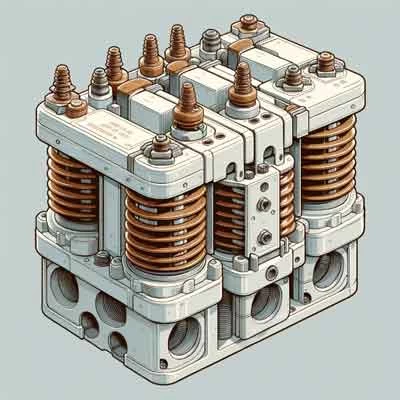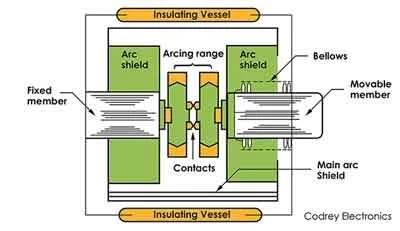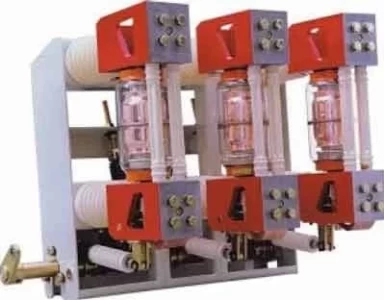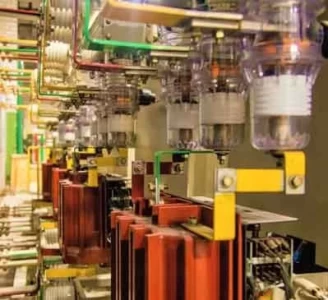Vacuum Circuit Breaker Advantages and Disadvantages

Vacuum Circuit Breakers (VCBs) have gained prominence in the electrical industry due to their unique operating mechanism and numerous advantages. However, like any technology, they also have certain limitations.
This article delves into both the advantages and disadvantages of Vacuum Circuit Breakers, providing a comprehensive overview of their applications in modern electrical systems.
Advantages of Vacuum Circuit Breakers
High Dielectric Strength
The vacuum inside the breaker has high dielectric strength, making VCBs highly effective at interrupting high voltage currents. This characteristic allows for compact designs as the distance required between contacts to quench the arc is significantly reduced compared to air circuit breakers.
Long Operational Life
VCBs are renowned for their durability and long operational life. The vacuum environment minimizes the erosion of the contacts due to arcing, ensuring that the circuit breaker can operate for many thousands of cycles without significant maintenance.
Minimal Maintenance
One of the most significant advantages of VCBs is their low maintenance requirements. The sealed vacuum interrupters do not degrade over time as air or oil interrupters do, which means that VCBs require less frequent inspections and servicing, leading to lower operational costs over their lifecycle.
Fast Operation and Quick Recovery
VCBs are capable of interrupting and establishing currents very quickly, which is crucial for protecting electrical equipment and systems from damage during fault conditions. Moreover, the dielectric strength of the vacuum recovers rapidly after arc extinction, allowing the circuit to be restored swiftly.
Environmentally Friendly
Unlike SF6 circuit breakers, VCBs do not use sulfur hexafluoride gas, which is a potent greenhouse gas. This makes VCBs a more environmentally friendly option for medium-voltage applications, aligning with global efforts to reduce carbon footprints and combat climate change.
High Interrupting Capacity
One of the most compelling advantages of VCBs lies in their exceptional ability to interrupt large fault currents. This characteristic is particularly crucial in medium voltage (MV) applications, where equipment like transformers and switchgear are susceptible to damage from these high currents. During fault events, the vacuum environment within the breaker extinguishes the arc rapidly and efficiently, effectively limiting fault damage and ensuring system stability.
Compact Design
ompared to their air circuit breaker (ACB) counterparts, VCBs offer a significantly smaller and lighter design. This compact size translates to several benefits:
Reduced Footprint
In substations and other installations with space constraints, the smaller footprint of VCBs allows for more efficient use of available space, facilitating easier installation and maintenance.
Improved Flexibility: The compact design offers greater flexibility in equipment layout and configuration, leading to better optimization of space within substations and other critical infrastructure.
Low Maintenance: Unlike ACBs, which require regular maintenance due to arcing during operation, VCBs benefit from the inherent properties of the vacuum environment. The sealed vacuum chamber significantly reduces arcing and contact wear, minimizing the need for frequent maintenance interventions. This translates to:
Reduced Operational Costs
- Lower maintenance requirements equate to reduced labor and material costs associated with ongoing maintenance practices.
- Increased System Uptime: Less frequent maintenance translates to higher system uptime, minimizing downtime associated with maintenance activities.
- Environmentally Friendly: Traditionally used oil circuit breakers (OCBs) posed significant environmental concerns due to the potential for oil leaks and the challenges associated with safe disposal of used oil. Conversely, VCBs eliminate these concerns by operating in a sealed vacuum environment, making them a more sustainable and environmentally friendly option.
Disadvantages of Vacuum Circuit Breakers
Higher Initial Cost: Compared to ACBs, VCBs typically have a higher initial cost. While the lower maintenance requirements can help offset this cost difference over time, the initial investment can be a significant consideration, particularly for projects with budget constraints.
- Limited Current Ratings: While offering superior interrupting capacity compared to standard low voltage (LV) breakers, VCBs generally have lower current ratings than some specialized high voltage (HV) breakers. This limitation may restrict their use in specific high current applications where higher current ratings are necessary.
- Vacuum Arc Potential: In rare cases, a phenomenon known as a vacuum arc can occur within a VCB during faults. This arc can potentially damage the breaker if not managed effectively. However, modern VCBs incorporate advanced design features and arc suppression techniques to minimize this risk.
- End-of-Life Disposal: While VCBs offer operational benefits, disposing of them at the end of their lifespan requires careful consideration due to the presence of hazardous materials within some components. Proper disposal procedures are crucial to ensure environmental protection and worker safety.
Limited Voltage Range
VCBs are generally used for medium voltage applications and may not be suitable for very high voltage systems where other types of circuit breakers, such as Gas Insulated Switchgear (GIS) with SF6, might be more appropriate. This limitation restricts their application in certain high-voltage transmission networks.
Higher Initial Costs
The initial cost of VCBs can be higher than some other types of circuit breakers, such as air circuit breakers. This might be a deterrent for some applications where budget constraints are a significant consideration, despite the long-term savings due to reduced maintenance.
Complexity in Mechanism
The operating mechanism of a VCB can be more complex than that of traditional air or oil circuit breakers. This complexity might require specialized knowledge for installation, operation, and troubleshooting, potentially increasing the training needs for personnel.
Sensitivity to External Conditions
While the vacuum interrupter itself is sealed and protected, the overall mechanism of a VCB can be sensitive to external conditions such as moisture and high ambient temperatures. These conditions can affect the insulating properties of external components, necessitating careful consideration during installation and operation.
Inspection and Replacement Challenges
Despite the minimal maintenance requirements, inspecting a vacuum interrupter for wear or degradation without breaking the seal is challenging. If a vacuum interrupter fails, it often requires complete replacement, which can be more costly and time-consuming than servicing other types of circuit breakers.
Vacuum Circuit Breakers offer a compelling set of advantages, including high dielectric strength, minimal maintenance, environmental friendliness, and long service life, making them a preferred choice in many medium-voltage applications. However, considerations such as higher initial costs, complexity, and limited application in high voltage systems must be taken into account. Despite these drawbacks, the benefits of VCBs, particularly their contribution to more sustainable and reliable electrical systems, continue to drive their adoption across the industry. As technology advances, it is likely that the applications for VCBs will expand, further solidifying their position in the electrical protection landscape.
Vacuum Circuit Breakers have earned their place as leading contenders in electrical protection due to their high interrupting capacity, compact design, and low maintenance requirements. However, they also present disadvantages, including higher initial cost, limitations in current ratings, and potential vacuum arc issues. Recognizing both the advantages and disadvantages is crucial for making informed decisions regarding the selection and application of VCBs in power systems. As technology continues to evolve, ongoing advancements can further strengthen the role of VCBs while addressing current limitations, solidifying their position as valuable tools for reliable and sustainable power protection.



